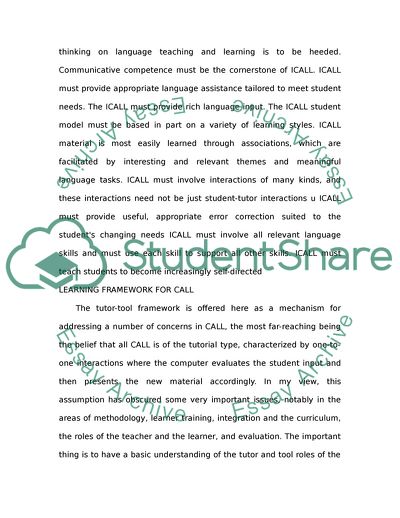Cite this document
(Computer Assisted Language Learning For Kuwaiti Pupils Coursework, n.d.)
Computer Assisted Language Learning For Kuwaiti Pupils Coursework. https://studentshare.org/education/1708025-the-effect-of-computer-assisted-language-learning-callon-fourth-grade-kuwaiti-students-achievement-in-english-vocabulary-learning
Computer Assisted Language Learning For Kuwaiti Pupils Coursework. https://studentshare.org/education/1708025-the-effect-of-computer-assisted-language-learning-callon-fourth-grade-kuwaiti-students-achievement-in-english-vocabulary-learning
(Computer Assisted Language Learning For Kuwaiti Pupils Coursework)
Computer Assisted Language Learning For Kuwaiti Pupils Coursework. https://studentshare.org/education/1708025-the-effect-of-computer-assisted-language-learning-callon-fourth-grade-kuwaiti-students-achievement-in-english-vocabulary-learning.
Computer Assisted Language Learning For Kuwaiti Pupils Coursework. https://studentshare.org/education/1708025-the-effect-of-computer-assisted-language-learning-callon-fourth-grade-kuwaiti-students-achievement-in-english-vocabulary-learning.
“Computer Assisted Language Learning For Kuwaiti Pupils Coursework”. https://studentshare.org/education/1708025-the-effect-of-computer-assisted-language-learning-callon-fourth-grade-kuwaiti-students-achievement-in-english-vocabulary-learning.


